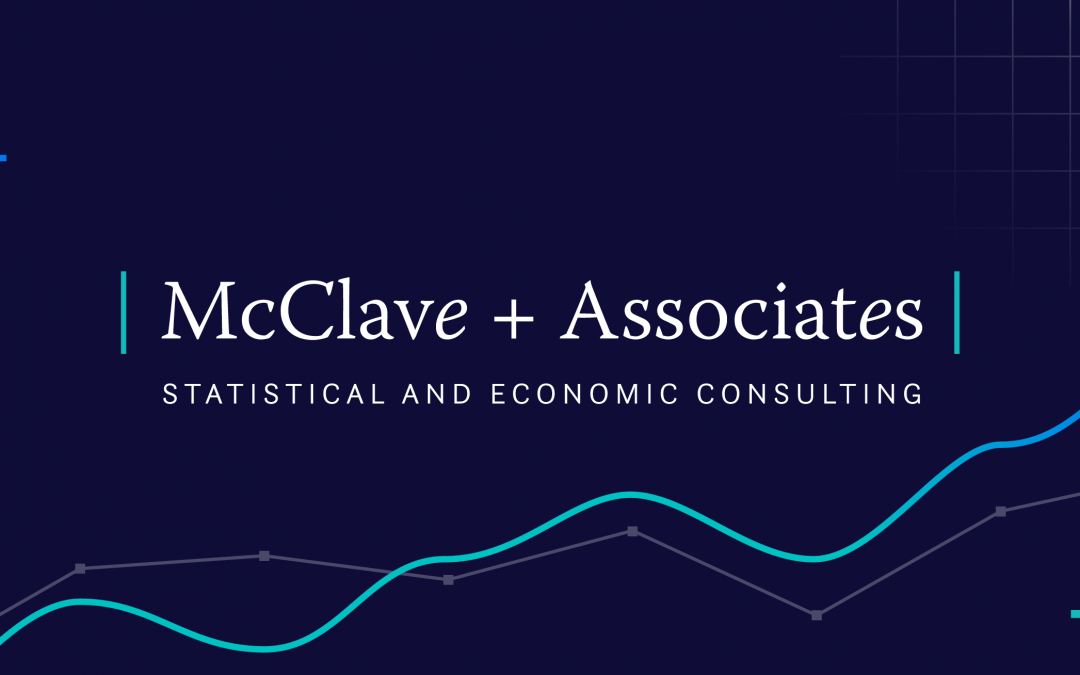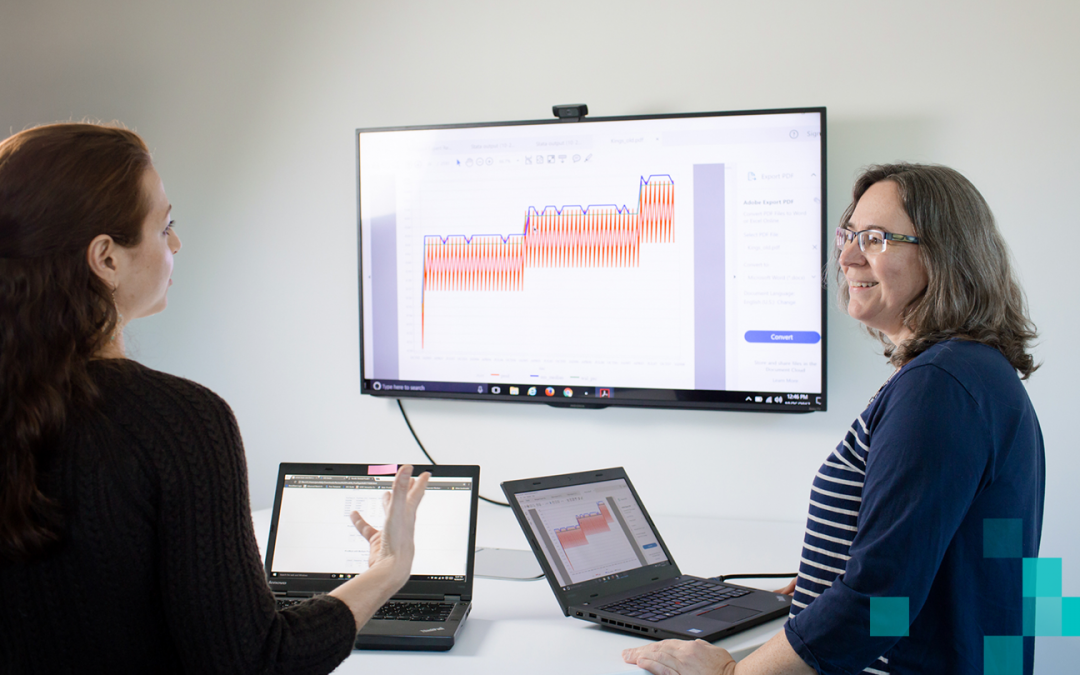
by Ericka Ryals | Feb 5, 2024 | Case Updates
Infotech Consulting had the opportunity to work with indirect purchaser plaintiffs in an industry that most people never even think about when turning on their faucets. Ductile iron pipe fittings (DIPF) are used to join ductile iron pipe, valves and hydrants within a water system as well as change or direct the flow of water and are an integral part of municipal and regional water and sewer systems. The end-user plaintiffs, including municipal water works departments, accused Defendants McWane, Inc, Sigma Corporation and Star Pipe Products of violating antitrust laws by restricting trade, charging supracompetitive prices for ductile iron pipe fittings, and unlawful monopolization between 2008 and 2014. These companies controlled over 90% of the DIPF market during this period. Infotech Consulting analyzed over 4.7 million DIPF distributor transactions to calculate the pass through rate to indirect purchasers that then was used to estimate the damages incurred by the end-users as a result of the conspiratorial behavior. Dr. Jim McClave’s damage model helped the plaintiff’s secure settlements totalling over $4 million.
In Re Ductile Iron Pipe Fittings (“DIPF”) Indirect Purchaser Antitrust Litigation, Civ. No. 12-169 (US District Court for New Jersey)
Originally published in 2018

by Ericka Ryals | Feb 2, 2024 | Case Updates
Not many of us still own a cathode ray tube (CRT) television, but many of us remember the big and bulky sources of entertainment from yesteryear. Makers of cathode ray tubes were accused of fixing the price of various sizes of cathode ray tubes from roughly 1995 to 2007, a time where these televisions and monitors were feeling the market pressure from flat panel televisions and monitors. Jim McClave and the Infotech Consulting team were engaged to perform damage analyses for 13 plaintiffs that opted out of the class action. The data spanned 18 years and involved analyzing defendant transaction data consisting of over 1 billion transactions with over $80 billion in revenue. Through the eight-year litigation period, settlements on behalf of class members and opt outs totaled over $800 million. Infotech Consulting’s thorough analysis of the data and expert synthesis of the material aided numerous plaintiffs in reaching advantageous settlements with over 10 defendants.
In re: Cathode Ray Tube Antitrust Litigation, Case No. 07-5944 SC and Case. No. 14-cv-02510 (US District Court for N.D. of California)
Originally published in 2018

by Kevin Caves | Mar 25, 2021 | Blog
 GSE Bonds Antitrust Litigation was a class action in which 16 of the world’s largest banks and financial institutions allegedly conspired to fix the prices of debt securities issued by government sponsored entities (“GSEs”), such as the Federal National Mortgage Association and the Federal Home Loan Mortgage Corporation. To fund operations critical to the financing of the US housing market, GSEs issue trillions of dollars in debt, underwritten by some of the largest financial institutions in the world.
GSE Bonds Antitrust Litigation was a class action in which 16 of the world’s largest banks and financial institutions allegedly conspired to fix the prices of debt securities issued by government sponsored entities (“GSEs”), such as the Federal National Mortgage Association and the Federal Home Loan Mortgage Corporation. To fund operations critical to the financing of the US housing market, GSEs issue trillions of dollars in debt, underwritten by some of the largest financial institutions in the world.
Plaintiffs alleged that these underwriting financial institutions orchestrated a horizontal conspiracy to artificially inflate the price of GSE Bonds. Defendants allegedly used electronic communications (among other means) to set pricing floors when new bond issuances were brought to market in the “free-to-trade” phase. Dr. Caves developed an econometric bond pricing model to measure artificial inflation in GSE Bond prices attributable to the alleged conspiracy. Drawing on Dr. Caves’ peer-reviewed academic work, the econometric model applied a nonparametric representation of the price formation process to Defendants’ voluminous transactional data.
In late 2019—less than a year after the case was filed— 13 large banks and financial services companies initially agreed to pay $337 million to resolve claims by investors that they conspired to rig prices of bonds issued by mortgage companies. By January 2020, all 16 Defendants agreed to settle for a total of $386.5 million, resulting in a substantial recovery for investors nationwide.
In granting final approval of the settlement, Judge Rakoff of the Southern District of New York noted the “high quality” of plaintiffs’ counsel’s work throughout the “fast pace[d]” litigation, and noted that “expert work…was essential to the resolution of this complex case.” In recognition of this accomplishment, counsel for Plaintiffs received the American Antitrust Institute’s award for Outstanding Antitrust Litigation Achievement in Private Law Practice.

by info-services@infotechinc.com | Dec 10, 2020 | Blog
Defendants are defendants, but plaintiffs can wear many hats — direct class plaintiff, indirect class plaintiff, opt-out, end-payor plaintiffs — each presenting their own version of their litigation story. In our practice, the Infotech Consulting team has seen a growing number of indirect class action cases, despite the complicated legal precedent they face.
Part and parcel of navigating this complicated legal landscape in the indirect class actions is providing reliable and robust expert economic and econometric analyses in the face of discovery issues and limitations. While sales data for a direct purchaser — one who buys directly from an alleged antitrust conspirator — is typically produced in discovery, will a discovery production include complete purchase records of indirect plaintiffs who buy the product further down the sales chain? If transaction data for indirect purchasers is incomplete, does the production include a sufficient sample to support a reliable analysis? If there is a simultaneous direct class action, is there coordination among the parties to avoid inconsistencies in analyses?
Indirect Action: A Brief History
 Section 4 of the Clayton Act authorizes damages suits in federal court by “any person who shall be injured in his business or property by reason of anything forbidden in the antitrust laws.” (15 U.S.C. sec. 7; 15(a)). However, in the seminal Illinois Brick case, the US Supreme Court essentially limited recovery to those plaintiffs who purchased directly from the defendants. (Illinois Brick Co. v. Illinois, 431 US 720 (1977)).
Section 4 of the Clayton Act authorizes damages suits in federal court by “any person who shall be injured in his business or property by reason of anything forbidden in the antitrust laws.” (15 U.S.C. sec. 7; 15(a)). However, in the seminal Illinois Brick case, the US Supreme Court essentially limited recovery to those plaintiffs who purchased directly from the defendants. (Illinois Brick Co. v. Illinois, 431 US 720 (1977)).
Embedded in matters related to judicial economy and concerns regarding duplicative recovery, the Court held that indirect purchasers are barred from pursuing damages under federal antitrust law. This landmark decision shut the door on potentially injured purchasers while allowing direct purchasers to recover the full amount of overcharges even if they passed some or all of those overcharges on to their customers. So how do these plaintiffs recover damages in federal court?
Thanks to Illinois Brick repealer statutes, many states have secured standing for indirect purchasers. These states, numbering around 30 including the District of Columbia, have enacted legislation that permits indirect purchasers to initiate antitrust actions in state or federal court under state antitrust laws.
The Supreme Court most recently weighed in on the indirect purchaser issue in its 2019 decision in Apple v. Pepper, in which the Court eschewed overturning Illinois Brick but arguably expanded the definition of “direct purchasers” permitted to pursue claims under federal antitrust laws. By defining consumers who purchased third party apps through Apple as direct purchasers, the Court may have created an opportunity for purchasers in a two-sided market to circumvent Illinois Brick in certain situations. A whole new category of “direct purchasers” may have been created: those consumers who make purchases using platform services such as ticket brokers or online platform sellers. Particularly noteworthy in cases where platform services are involved, the Court specifically ruled that the form of the upstream arrangement between the manufacturer and the allegedly “monopolistic retailer” — e.g., who sets the retail price — is not relevant to the direct purchaser inquiry.
Building a Robust Econometric Analysis for Indirects
Since a robust empirical analysis is critical to certifying a class of indirect purchasers and ultimately demonstrating impact and damages, data is key. Defendants’ sales data typically is used to estimate the overcharges incurred by direct purchasers, a critical first step in the indirect plaintiffs’ impact and damages analyses. But that data rarely includes sufficient (or any) indirect purchaser end-user information: once Defendant sells Widget X to its distributor (the direct purchaser), Defendant has no record of Widget X’s sale to our Indirect Plaintiff.
Further complicating the matter, there may be multiple layers of indirect purchasers in an industry: distributors, retailers, consumers, and, in the increasingly common pharmaceutical cases, third party payors (insurance companies). Securing transaction data that includes records of sales between the direct purchasers and indirect plaintiffs is essential to an empirical analysis of the indirects’ claims, but our experience has been that obtaining all records of all indirect purchases is uncommon.
In that event, a statistically valid sample of direct-to-indirect records can form the basis for the econometric analysis, bolstered by documentary and other evidence. Identification of large indirect purchasers who maintain their own complete transaction records also may yield supporting data for the expert analysis.
 The more-data-is-better rule of thumb puts indirect plaintiffs in a better position to defeat challenges such as ascertainability, particularly with a robust empirical analysis supported by ample documentary evidence of pass through and widespread impact. Access to and the ability to fully understand the purchase transactions of the named indirect plaintiffs can help to avoid additional roadblocks to class certification.
The more-data-is-better rule of thumb puts indirect plaintiffs in a better position to defeat challenges such as ascertainability, particularly with a robust empirical analysis supported by ample documentary evidence of pass through and widespread impact. Access to and the ability to fully understand the purchase transactions of the named indirect plaintiffs can help to avoid additional roadblocks to class certification.
Regardless of the source of the data, early access to this data, and leaving sufficient time for follow-up with the producing parties and analysis is critical. Often, coordination with direct plaintiffs in parallel litigation can present opportunities to share data, data processing and even analysis. Since, again, the first step of the indirect plaintiff’s expert analysis often is the estimation of an overcharge to the direct purchasers, some coordination with the direct plaintiff’s expert to avoid unnecessary inconsistencies can prevent experts being pitted against each other.
While the production of data from defendants, from direct purchasers, and from indirect plaintiffs themselves and the coordination of various expert analyses can seem daunting, the importance of strategic and timely planning in an indirect case is elevated given the complicated and multi pronged analysis necessary to support class certification.

by info-services@infotechinc.com | Sep 5, 2018 | Case Updates
The country’s biggest dental supply distributors reached an $80 million settlement agreement with dentists and dental laboratories in a proposed class action case. Distributors Henry Schein, Inc., Patterson Cos. Inc. and Benco Dental Supply Co. Inc. were accused of artificially inflating prices on dental supplies and equipment. Products at issue included supplies such as adhesives, implants, tooth brushes, pins and posts all the way to equipment such as imaging devices and dental chairs. Although there are hundreds of distributors and manufacturers of dental supplies and equipment, Defendants controlled approximately 80% of the market share.
Info tech, Inc was hired to calculate damages to plaintiffs due to the alleged conspiratorial conduct. In formalizing a damage analysis, Infotech Consulting scrutinized over 400 million transactions that occurred between January 2009 and March 2016. After a thorough econometric analysis, Dr. McClave opined that prices were in fact elevated during the conspiracy period. Minutes before a scheduled Daubert hearing, defendants agreed to a settlement figure bringing the case to closure.



 GSE Bonds Antitrust Litigation was a class action in which 16 of the world’s largest banks and financial institutions allegedly conspired to fix the prices of debt securities issued by government sponsored entities (“GSEs”), such as the Federal National Mortgage Association and the Federal Home Loan Mortgage Corporation. To fund operations critical to the financing of the US housing market, GSEs issue trillions of dollars in debt, underwritten by some of the largest financial institutions in the world.
GSE Bonds Antitrust Litigation was a class action in which 16 of the world’s largest banks and financial institutions allegedly conspired to fix the prices of debt securities issued by government sponsored entities (“GSEs”), such as the Federal National Mortgage Association and the Federal Home Loan Mortgage Corporation. To fund operations critical to the financing of the US housing market, GSEs issue trillions of dollars in debt, underwritten by some of the largest financial institutions in the world. Section 4 of the Clayton Act authorizes damages suits in federal court by “any person who shall be injured in his business or property by reason of anything forbidden in the antitrust laws.” (15 U.S.C. sec. 7; 15(a)). However, in the seminal
Section 4 of the Clayton Act authorizes damages suits in federal court by “any person who shall be injured in his business or property by reason of anything forbidden in the antitrust laws.” (15 U.S.C. sec. 7; 15(a)). However, in the seminal  The more-data-is-better rule of thumb puts indirect plaintiffs in a better position to defeat challenges such as ascertainability, particularly with a robust empirical analysis supported by ample documentary evidence of pass through and widespread impact. Access to and the ability to fully understand the purchase transactions of the named indirect plaintiffs can help to avoid additional roadblocks to class certification.
The more-data-is-better rule of thumb puts indirect plaintiffs in a better position to defeat challenges such as ascertainability, particularly with a robust empirical analysis supported by ample documentary evidence of pass through and widespread impact. Access to and the ability to fully understand the purchase transactions of the named indirect plaintiffs can help to avoid additional roadblocks to class certification. 